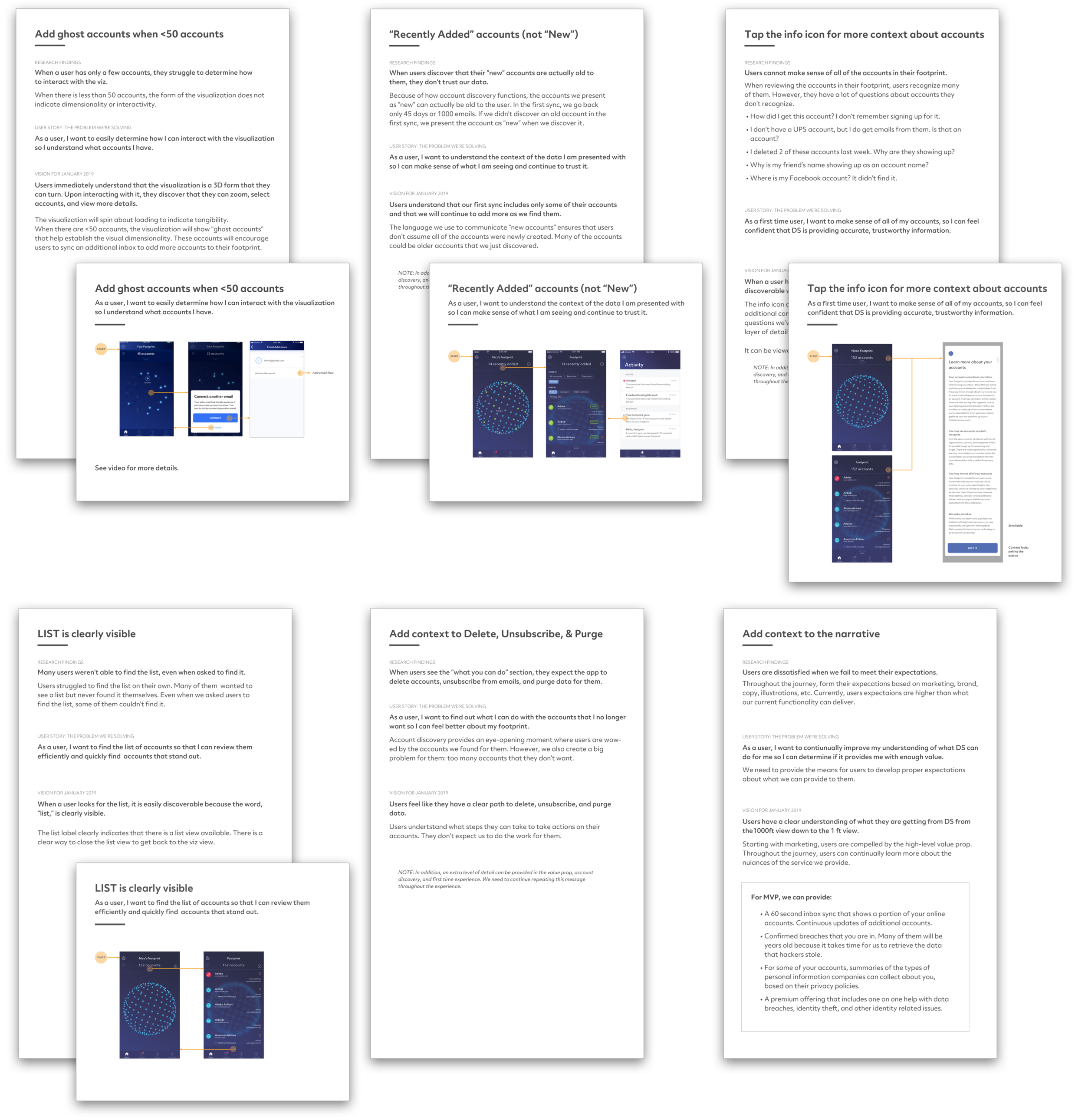Allstate Digital Safety
2017-2019
Research
Prototyping
Product Design
Innovation Design
Building a new business within an 89-year old, Fortune 100 insurance company
After spending most of my career in hyper-growth startups, I wanted to experience building a business within a large company. I joined Allstate’s innovation team to do just that.
The team was working to create a new form of protection to fit the needs of consumers today. Besides homes and vehicles, consumers’ data and identities are often their next most valuable assets. We were tasked with building a new business to protect it.
As the first in-house designer, I helped build a team and was involved in every aspect of the product development process. We conducted research and iterated through 11 releases before pivoting on business model.
Here are a few of the highlights from our journey.
Allstate’s Innovation team is a small group tasked with enabling and driving Allstate’s long-term future. We create new lines of business, disrupt existing ones, and provide innovation consulting across the enterprise.
Power of the prototype
In the past 89 years, the insurance business hasn’t changed much and orthodoxies within Allstate are pervasive and strong. When we worked to bring the Digital Safety app to market, our biggest blockers came down to the Security and Legal teams. As you can imagine with any insurance company, Allstate has a culture of risk-aversion and those two teams often said no.
Before an important meeting with Allstate’s CEO, Tom Wilson, the VP of Product and Design asked for my help in preparing a PowerPoint deck to show the experience of the app. I suggested she hand him a phone with a prototype on it, but she couldn’t imagine doing that because of our slide-driven culture. I explained to her how the prototype would provide him with the immersion necessary to convey the experience, and she understood but was still hesitant. I told her I would create both, and when she was speaking to the slide, if she felt comfortable, she should hand the prototype to the CEO.
During the meeting, she handed the prototype to the CEO and he responded by saying, “Consumers need this. What do you need to make it happen?” My boss replied, saying that we needed Amazon Web Services (AWS) to run our backend technology efficiently. Other teams had been trying to get AWS past the Security team for over three years. One month later, we had AWS.
Bringing it all together and iterating
Throughout the project, I was the lead product designer and led a small team of designers and researchers through the development of 11 releases. During that time, I ran cycles of research and iteration to improve the UI, the content, the interactions, and the entire experience. Here is a look at some of those iterations.
Creating and managing the UX backlog
Part of my role in building the design team was to codify our research findings and recommendations into a UX backlog. I collaborated with Product and Engineering to prioritize UX fixes and implement the changes.
Gaining buy-in on recommendations
To get our recommendations prioritized on the roadmap, I brought research findings into the conversation. I documented the user problems and solutions to facilitate a shared understanding with both leadership and the cross-functional team.
Building and validating
I worked closely with our engineering team to get the details of the design implemented properly. After each build, I worked with our research team to validate our recommendations in a production environment.
Using research insights to develop our monetization strategy
Throughout our cycles of research and iteration, one of the core insights that we found repeatedly was: Users want to take action on their digital footprints. Historically, the experience provided a rich, new look into users’ digital lives, but we didn’t offer much support when their information was misused or stolen.
This insight led us to a monetization strategy that leveraged identity protection as a new form of protection from Allstate. I worked with our Product and Engineering teams to design and build an experience that incorporated a white-labeled 3rd party identity protection service.
THE RESULTSAccelerate the business model by pivoting our strategy
After breaking down barriers, building confidence in our users, developing scalable infrastructure, and integrating a white-labeled identity protection partnership, Allstate’s leadership team pivoted on our strategy. The work we had done to build a foundational product and monetize it, led to the $525M acquisition of InfoArmor. Allstate’s leaders wanted to accelerate the business model we developed, and this acquisition provided the opportunity.
InfoArmor is now known as Allstate Identity Protection and the core functionality of Digital Safety has been integrated into our product suite and the Allstate mobile app.





